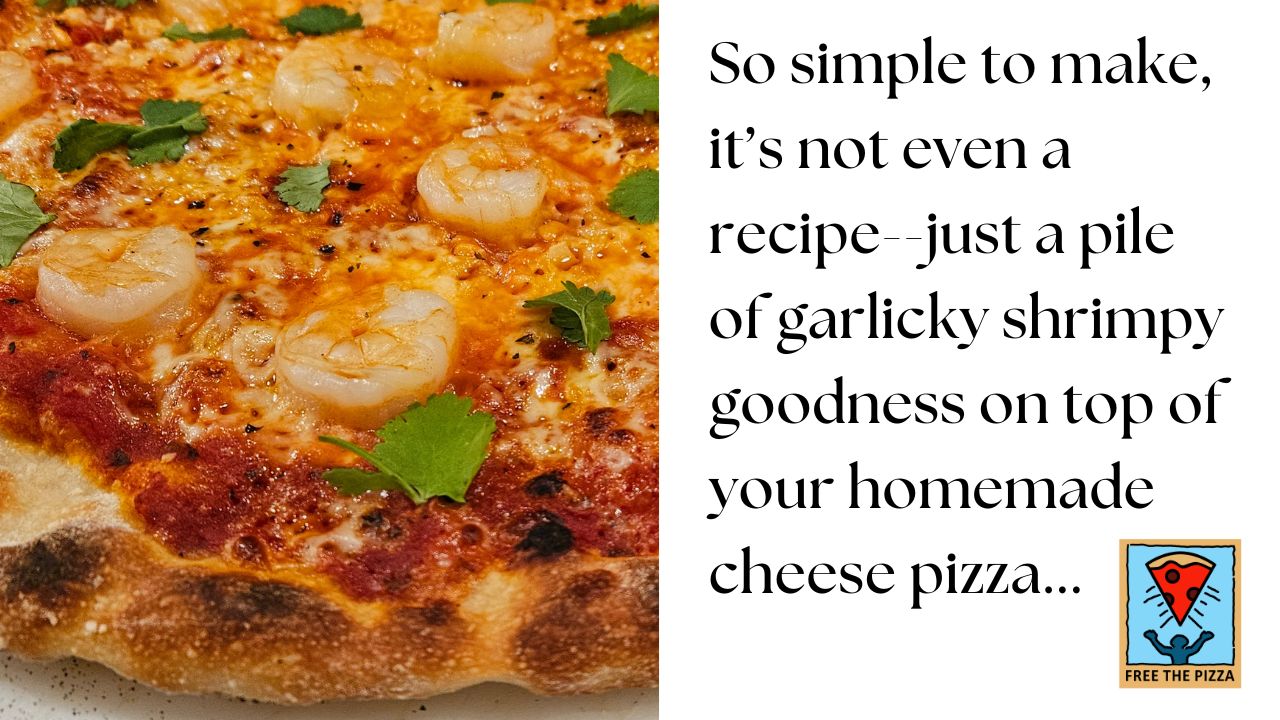|
Last week, I unleashed upon you a white pizza with clams and bacon. The response has been all kinds of enthusiastic. I had a different response from Peter Reinhart, whose recipe I’d adapted by adding bacon. (He offered a hearty endorsement of the added pork product, by the way. Should you wish to see the original blog post, it is here.) In his reply to my post, Peter said, “I don't know where the aversion to cheese and seafood started.” As often happens (since I’m a contrarian), I’d already been thinking about that fish and dairy “prohibition” for some time. And it suddenly seemed like the right time to blast that seafood and cheese nonsense out of the water.
0 Comments
In a fit of pizza panic (which doesn’t happen a lot these days), we produced this pizza that--wow--blew off their socks. We had this pizza yesterday, and will be having it again tomorrow. It's that good. And you should try making this one yourself. As soon as possible, in fact. It requires a little more prep than most pizzas. It’s also a white pizza, which can create pushback among the red-sauce diehards. Ignore that. If you have anything even vaguely resembling an adventurous spirit for food, this is an herby, peppery, savory, salty delight. And there’s bacon involved. It’s Independence Day weekend, and you’re out doing things and not making pizza inside.
I've also considered that you may need some beach reading. So I’m doing something that seems to be totally unrelated to pizza: I’m recommending a comic novel about VampiresInVans.com. It was a #1 New Release on Amazon when it debuted about two weeks ago. The pizza looks fantastic! People love it. Social media friends and fans are lining up to like it! But what’s the real story behind that pretty pepperoni pie? Well… Meh. It’s nothing special. I can do better and so can you—even if you’re a newbie. (In fact, if you’re an old hand, you already know this. Shape has no flavor, and neither does photography.) Too much pizza dough. How does that happen? Dumb mistakes, that’s how. I recently found myself with an extra batch of dough. This did happen during my recent bout with COVID, so you can understand how my thinking processes may have been muddled. That said, I fell upon a solution to deal with all that dough, and I’m going to share it with you. It will be some of the best, easiest bread you’ve ever had. What exactly is a COVID pizza? I think you’re looking at it in the photo above. As some people I know might say, “Dude, that cheese pizza is righteous!” OK, maybe so—until you see the whole thing. You’ll get to see it in just a moment. Why does the homemade pizza world need a white pizza sauce? Because forearmed is for friends.6/8/2024 White pizzas are not the most popular. But when you can make a killer white pizza—which is not that hard to do— it pushes the boundaries on your pizza repertoire. It can also ingratiate you to people worth knowing. What on earth am I talking about? Pizza is very much a social food. And in an age where food allergies are on the rise, there’s a chance that you’re going to find allergic friends at your table because, allergies aside, everyone loves pizza. Recent example: I’ve developed a fascination with mushrooms--which is also an example of an arc in one’s food character. Remain calm. Panic is the enemy. There is no reason anything here needs to end in a calzone moment. Even though it's stuck to the peel, you still have a pizza. This hasn’t happened to you yet? Good for you. But you will do it. Pizza Life is peppered with Calzone Moments. Here's how it happens, and here's how to recover with grace, style, and aplomb enough to have angels cheering you from the pizza heavens. There are people who will never be able to make a pizza. They won't even try. Some folks will try it once, and decide it’s not for them. And then there are people who seem to be able to produce a fresh, hot, savory, tangy, cheesy, mind-bending home-baked pizza whenever they want—to the point where the conversation goes something like this: “What do you want to eat? I can grill a chicken, make linguine in white clam sauce, or bake a sausage and mushroom pizza.” How do they do this? “It was one of those moments where you say, ‘This is a perfect bite.’” That’s an actual quote from someone eating this pizza--one of my harshest critics, in fact. If you’re already making homemade pizza at any level, the pizza she’s talking about is easy to assemble, nobody sees it coming, and people love it. Welcome to the unexpected--The Land of Shrimp & Garlic Pizza. We’re going to talk about: 1) how to make it, 2) what goes on it, and 3) how to handle it so it amazes your friends and family and makes you a homemade pizza superhero. |
AuthorBlaine Parker is the award-winning author of the bestselling, unusual and amusing how-to pizza book, Free The Pizza. Also known as The Pizza Geek and "Hey, Pizza Man!", Blaine is fanatical about the idea that true, pro-quality pizza can be made at home. His home. Your home. Anyone's home. After 20 years of honing his craft and making pizza in standard consumer ovens across the nation, he's sharing what he's learned with home cooks like you. Are you ready to pizza? Archives
July 2024
Categories
All
|
© Copyright 2021, 2022, 2023, 2024. All rights reserved.
As a ShareASale Affiliate and an Amazon Associate, we earn a small percentage from qualifying Amazon purchases at no additional cost to you.
When you click those links to Amazon (and a few other sites we work with), and you buy something, you are helping this website stay afloat, and you're helping us have many more glorious photographs of impressive pizza.
When you click those links to Amazon (and a few other sites we work with), and you buy something, you are helping this website stay afloat, and you're helping us have many more glorious photographs of impressive pizza.











 RSS Feed
RSS Feed